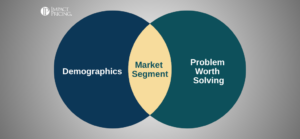Despite what some may say, pricing is not a business strategy.
Your strategy is the big picture of how you compete relative to your competition in the market. It should be based on how your product or service is different from your competition. This could be due to features, location, marketing, breadth, or focus of offering – there are many things it could be, but it should not be pricing.
An Exception to the Rule
There’s only one specific instance in which pricing can be your business strategy: and that’s if you are always known for the lowest price (think of Wal-Mart as an example). If you take this as your strategy, then your business must be permanently focused on lowering and controlling costs, just like Wal-Mart. You attract the price-sensitive buyers, customers who are often not loyal but rather are looking for the lowest price.
As soon as a competitor figures out how to produce a similar product for less, they will charge lower prices – and you will struggle. This also applies to Wal-Mart: if another company figures out how to sell products for less than Wal-Mart, Wal-Mart will be in trouble. Wal-Mart has a laser focus on keeping costs down to make sure this doesn’t happen. If you make constant low prices your strategy, you’ll have to be like Wal-Mart, laser-focused on keeping costs as low as possible.
A Pricing Strategy Must Differentiate
Now, you might be thinking about a different pricing strategy. “My product is as good as a Lexus, but I’m not going to charge as much as a Lexus. I’m going to make this my strategy.” Don’t do it. You may be able to achieve this position in the market for a short time, but it’s not sustainable. The market will change, and your position may or may not exist in a few years. You have competitors on both sides, above and below, either of which may be able to steal your position – because it’s just about price. A better strategy would be to position yourself relative to something like a Toyota, differentiate yourself, then price to the market.
This is not to say that you can’t have a pricing strategy. In fact, you MUST have a pricing strategy. Your pricing strategy is different from your corporate strategy. Your pricing strategy is a big picture view of how you set your prices.
The 3 Primary Pricing Strategies
There are three primary pricing strategies: penetration, skimming, and neutral.
- Neutral pricing is setting a price similar to your competition, considering any difference in value offered.
- Penetration pricing is charging lower prices to grow the market or take significant market share.
- Skimming is charging higher prices, usually to segment the market.
In a future post, we will discuss when each of these strategies is most appropriate.
The action you can take today
Write down your corporate strategy. What is your competitive advantage? Did you mention the word ‘price’? If so, try to rewrite it without using the word ‘price.’















